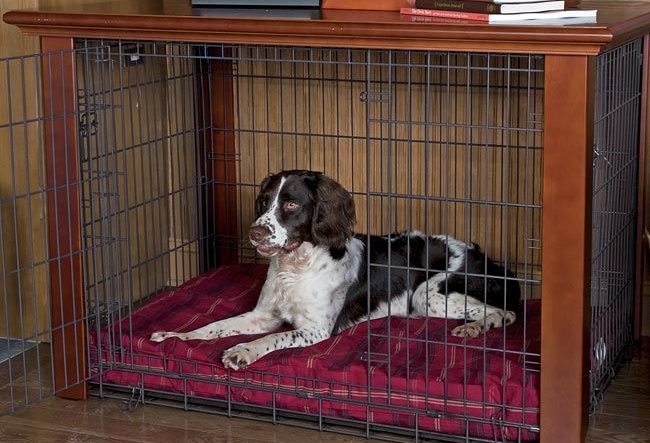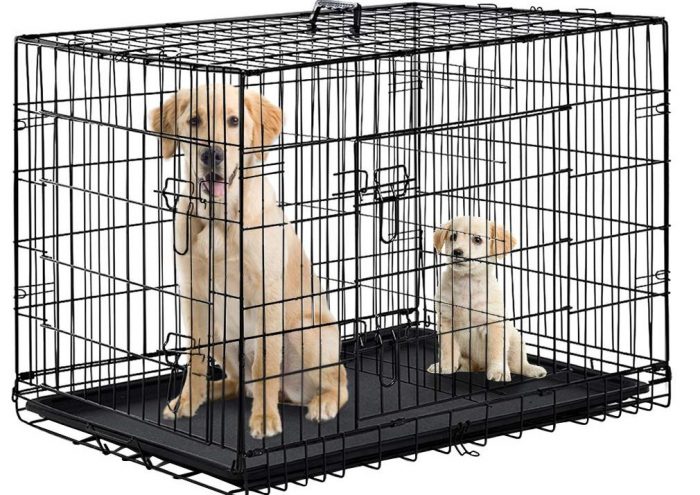The dream and desire of every dog owner would be to have a canine companion that is very loyal, obedient, neat and tidy, but unfortunately, some dog breeds are not naturally built to comply with the last two desirable traits. This justifies the fact that raining your furball – especially from puppyhood, to stay in a dog crate, is the best way to achieve some of these desirable behaviours.
Notwithstanding the perks that come with it, misusing a dog crate can turn into a nightmare for both the dog and the parents. We will be looking at the best ways to crate train your dog in this piece, have a wonderful read.
Table of Contents
How Long Is Too Long To Use A Dog Crate?
There is no straight forward answer to this very pertinent question when you have decided to crate train (preferably) your puppy. Howbeit, the answer to this question begins by first identifying what you (as the dog owner) desire to achieve by crate training your dog; the second aspect to answer this question is, of course, your dog.
It is important to know that the issue of how long to leave your pup in a dog crate ultimately depends on the individual dog in question and several other factors such as the temperament, distinct personality of your dog, underlying individual or breed-related health challenges, etc.
For puppies, especially those under 6 months of age, they generally have a harder time controlling their bowel/bladder movements, and the need to eliminate waste is most times involuntary. Some dog rights advocacy groups suggest that young puppies should only be left in a dog crate for between 3 to 4 hours at a stretch. This means you have to take them out for potty breaks and a little play and interaction time.
Some other groups, however, believe that puppies can be left in a crate for (N + 1) hours – where N represents the age of the puppy in months; meaning a 4 months old dog can be left in a crate for up to 5 months at a stretch. Meanwhile, there’s a need to monitor the behaviour of your puppy while in the crate to determine if these stated durations are adequate or you may have to reduce it.
An adult dog, on the other hand, should be able to stay in its crate for between 8 to 12 hours at a stretch – provided it can regulate its bowel movement effectively. Once you get back from work or wake up from sleep (if that is your reason for dog crating), then you have to release your dog to “stretch its legs” and eliminate as soon as possible. You will also need to take your furry friend for a walk or jog around the neighbourhood after spending such extended time in the dog crate.
Keep in mind that denying your pup the opportunity to eliminate waste when nature calls is categorised as animal cruelty. Therefore, keeping the dog locked up for long hours and assuming they can hold their bowel movement is wrong.
The Best Ways To Crate Train A Puppy
Training your puppy to stay in a crate can be a challenging task if you don’t go about it the right way. So, here are a few suggested steps to make this process a much easier one:

1. Choose the right crate for your puppy
Since it is intended that your dog will stay in its crate for long periods of time, its best to choose a crate that will comfortably house the adult size of your puppy. You can use safe material to partition the space not yet needed by your puppy, eventually removing this as it grows older.
2. Gently introduce your dog to its crate
Start early by creating the impression to your dog that its crate is a safe place to relax and sleep. Do not attempt to put your pup in the crate when it is in a playful or excited state of mind, rather do so when it is in a relaxed mood.
Place the crate in the part of the house where you or your family spend most of your time and make sure it is well aerated. Open the door of the crate and allow your pup to explore it, if it won’t go in on its own accord, use treats to encourage it.
3. Encourage your puppy to spend more time in the crate
Once your cautious dog has become more accustomed to its new safe zone, support it to spend more time in it. Begin by shutting the door behind your dog for a few minutes after entering the crate, while sitting or standing by it, then leave the room with your dog still left in the crate for between 5 to 10 minutes. Repeat this process as often as possible.
As your pup becomes more accustomed to this routine, gradually increase the time you will be away from the dog crate, but remember to make this gradual so as not to induce separation anxiety in your canine companion.
4. Watch your puppy’s reaction while in the crate
There will definitely be a reaction from your puppy after being left in the dog crate by itself. Some will whine, whimper, bark, howl or even try to look for an escape route from the crate; all these are expected and can be allayed by keeping your pup well occupied in the crate. You have to distinguish between when your pup is calling for your attention (to play or pet) and when it needs to eliminate; ignore the former but let it out for the latter and put it back into the crate thereafter.
5. Patience is the key
Don’t expect instant compliance and acceptance from your dog as you crate-train it, give it time to adjust to your new rules and its changing environment. As days turn to weeks, and then months, your firm consistency and patience with your dog will pay off. With time, your pooch will accept staying in its dog crate and if enough motivation is provided therein, it may come around to liking it, but remember that the key to success here is PATIENCE.
Read Also: Can You Declaw A Dog? Why Declawing A Dog Can Be A Felony
Is It Cruel To Leave Your Puppy In A Dog Crate Overnight?
If your lifestyle and apartment space do not allow you to let your puppy loose during the night, then it is logical to leave it in the crate overnight, and that’s not cruel at all.
Nonetheless, you have to listen to your dog’s “signal” when it needs to eliminate waste, and if you have taught the pooch a safe word associated with this process and it responds favourably, then let it out of the crate to go relieve itself. You can put it back in shortly after – while avoiding exciting the puppy.
